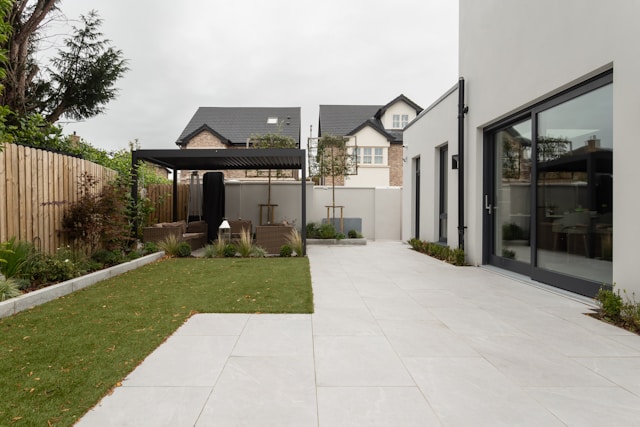Remodeling a home doesn’t have to mean draining your bank account. With a little creativity, planning, and smart decision-making, it’s absolutely possible to give your space a fresh new look without spending a fortune. Whether you’re updating a room, modernizing outdated décor, or trying to increase the value of your property, you can find many affordable ways to remodel on a budget.
In this guide, we’ll walk you through practical and cost-effective strategies to help you achieve your home renovation goals while keeping your finances intact.
Set a Realistic Budget
Before swinging a hammer or picking out paint colors, it’s crucial to define how much you can afford to spend. One of the most important steps in any home remodeling project is budgeting.
Start by listing the areas you want to improve and rank them by priority. Focus first on the projects that provide the biggest return or address essential needs, such as fixing a leaky roof, updating a bathroom, or improving energy efficiency. Don’t forget to account for unexpected expenses setting aside 10–15% of your total budget as a cushion is always a smart move.
Using spreadsheets or budgeting apps can help you stay organized and track every dollar.
DIY Where Possible
One of the best ways to achieve cheap home upgrades is by doing some of the work yourself. While certain tasks like electrical and plumbing work may require professionals, many remodeling projects are ideal for beginners.
Painting walls, installing peel-and-stick backsplash tiles, assembling furniture, or even laying down laminate flooring are all manageable for DIYers. With the wealth of free tutorials on YouTube, blogs, and home improvement forums, there’s never been a better time to take the DIY route.
DIY remodeling tips not only save money but also give you a sense of pride and ownership over your home’s transformation.
Reuse and Repurpose
A remodel doesn’t always mean buying new. One of the easiest ways to save money is by reusing and repurposing materials and furniture you already have.
For example:
-
Sand and paint old cabinets instead of replacing them.
-
Reupholster chairs or couches with budget-friendly fabric.
-
Turn old wood pallets into shelves or coffee tables.
-
Use leftover tiles for a small kitchen backsplash.
You can also explore local thrift stores, online marketplaces like Facebook Marketplace or Craigslist, and architectural salvage yards to find unique items at a fraction of retail prices. These places are goldmines for budget home remodeling supplies.
Affordable Upgrades with Big Impact
You don’t need a complete overhaul to make your home feel new. Sometimes, small and inexpensive changes can create the biggest visual impact.
Paint
A fresh coat of paint can completely change the look and mood of any room. Neutral tones can make spaces feel bigger and brighter, while bold accents can add character.
Lighting
Swapping outdated fixtures for modern, energy-efficient lighting can improve both style and functionality. Consider adding dimmer switches, pendant lights, or LED strips for a polished look.
Hardware
Updating cabinet knobs, drawer pulls, and door handles is a low-cost improvement that can give a dated kitchen or bathroom a sleek update.
Flooring
If replacing floors is out of budget, consider peel-and-stick vinyl planks or area rugs to refresh a room. These are excellent options for low-cost home improvement.
Wall Treatments
Try peel-and-stick wallpaper, decals, or DIY board-and-batten panels to give your walls texture and style without the need for major renovations.
Shop Smart
Knowing when and where to shop can make a big difference in the cost of your remodeling project. Here are a few shopping strategies to keep in mind:
-
Shop sales: Take advantage of holiday sales and clearance events at big-box retailers.
-
Use coupons: Sign up for newsletters and apps that offer discounts or cashback on home improvement purchases.
-
Check clearance sections: Home improvement stores often have returned or slightly damaged items at steep discounts.
-
Buy in bulk: For projects that require large quantities of materials (like tiles or paint), buying in bulk can lower your cost per unit.
-
Negotiate: Don’t be afraid to ask contractors for better prices or to match a competitor’s quote.
Focus on One Room at a Time
Trying to remodel your entire home all at once can quickly become overwhelming and expensive. Instead, tackle one room at a time. This approach allows you to focus your resources and energy efficiently while maintaining better control over your spending.
For example, you might begin with a small bathroom upgrade painting the walls, changing the faucet, and adding new lighting. Once complete, you can move on to the kitchen or living room, building on your momentum without stretching your budget too thin.
Financing Tips (Optional but Useful)
Even with a tight budget, some upgrades may still require more funds than you have on hand. If you need financial support, consider these low-risk options:
-
0% interest credit cards: Many credit cards offer introductory 0% APR for 12–18 months. Just be sure to pay it off before interest kicks in.
-
Personal loans: Small loans from reputable lenders can help fund essential improvements.
-
Government grants or rebates: Check if there are local or national programs that support energy-efficient home improvements or first-time buyer remodels.
Only borrow what you can afford to repay, and always compare interest rates and terms.
Conclusion
Remodeling a home on a tight budget is entirely doable when you approach the process with a clear plan, realistic expectations, and a bit of resourcefulness. By using smart strategies like DIY remodeling tips, shopping smart, and reusing materials, you can achieve impressive results without overspending.









